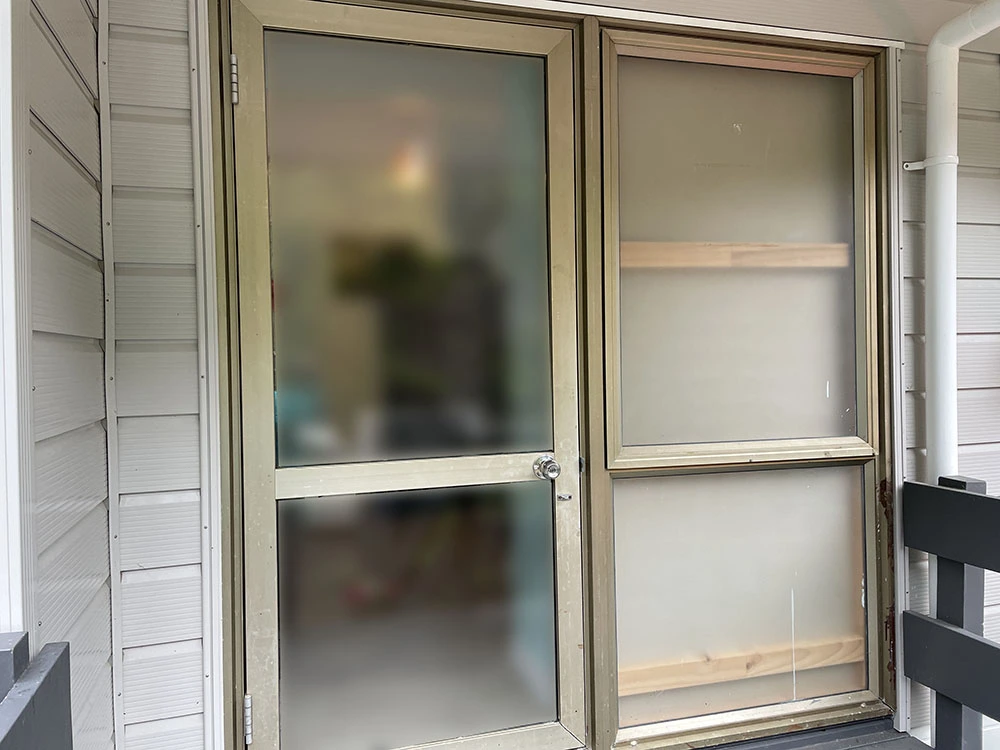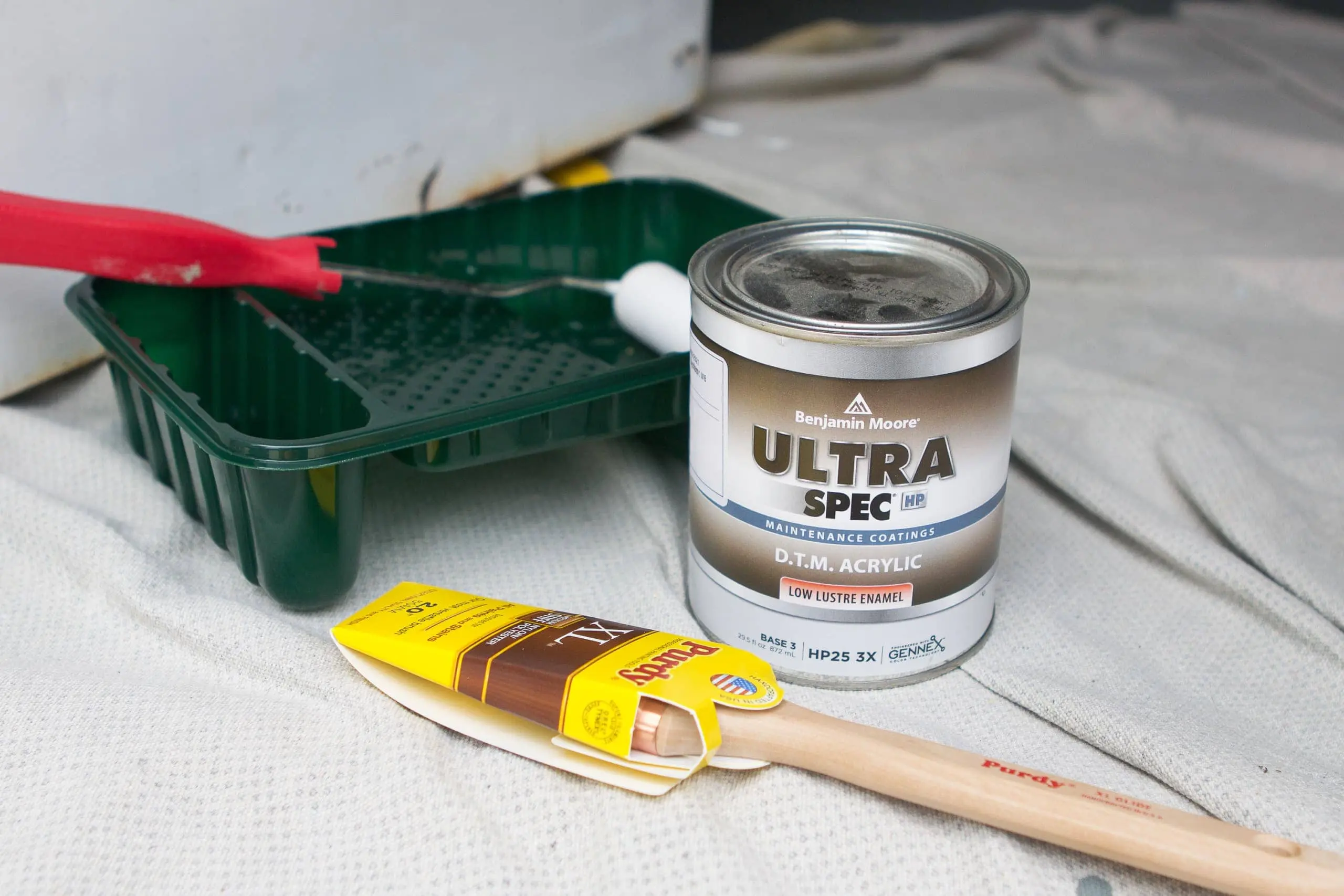Aluminum doors are known for their strength and modern look, but over time, their finish can fade, chip, or just lose its charm. Whether it’s from years of sun exposure or you’re simply ready for a style update, repainting your aluminum door is a smart way to refresh your entryway. A fresh coat of paint doesn’t just boost your curb appeal—it also adds a layer of protection against rust, weather, and daily wear.

The best part? You don’t need to replace the door or hire a professional. With the right prep, tools, and paint, giving your aluminum door a makeover can be a simple and satisfying DIY project. Let’s walk through how to do it right—from cleaning to finishing—so you get smooth, lasting results.
Tools and Materials Checklist

Before you start painting your aluminum door, make sure you’ve got everything ready. Here’s what you’ll need for a smooth, durable finish:
Cleaning supplies (soapy water, TSP, or substitute)
Sandpaper or Scotch-Brite pad
Painter’s tape and masking paper/newspaper
Etch primer or direct-to-metal (DTM) primer
Exterior paint (acrylic, epoxy, or oil-based)
Foam roller, brush, or spray can
Optional: clear sealant for extra protection
Step-by-Step Guide to Painting an Aluminum Door
Giving your aluminum door a fresh new look is easier than you might think. Just follow these steps carefully for a clean, lasting finish.
1. Clean the Door Thoroughly

Start with a deep clean using soapy water or TSP to remove dirt, grease, and grime. For any rust spots or paint splashes, use a Scotch-Brite pad or light sandpaper. Rinse well and let the surface dry completely—this step is key to good paint adhesion.
2. Remove or Mask Hardware and Glass
Unscrew handles, locks, and mail slots if possible. Cover any glass or wall edges with painter’s tape and newspaper. A clever trick? Slip a latex glove over the handle and tape it off—it gives clean paint edges without the hassle.
3. Sand and Prep the Surface

If the door has a glossy or powder-coated finish, gently sand it with fine-grit sandpaper to help the primer grip. Don’t overdo it—just enough to dull the sheen. Wipe away dust with a clean cloth.
4. Apply Metal Primer

Use a quality etching primer or DTM (direct-to-metal) primer for a strong bond. Spray or brush it on in thin, even coats. One or two coats usually do the trick. Be patient and allow each coat to fully dry.
5. Paint the Door

Now for the fun part—painting! Choose acrylic or epoxy-based paint for aluminum surfaces. Apply with a foam roller or spray can in multiple thin layers. If spraying, use short bursts to prevent drips and get a smooth, even finish.
6. Let It Dry & Apply Additional Coats

Wait at least 2–6 hours between coats or follow the paint manufacturer’s instructions. Apply 2–3 coats for best coverage. Avoid thick coats—they can lead to runs and uneven gloss.
7. Optional: Apply Clear Protective Sealant
![]()
Want extra protection from UV rays, moisture, and scratches? A clear sealant designed for metal surfaces will lock in your color and keep it looking fresh longer.
8. Unmask and Reinstall Hardware

Remove masking tape while the paint is still slightly tacky—this gives cleaner edges. Once the paint is fully cured (12–24 hours), reinstall all hardware and enjoy your door’s fresh new look!
FAQs: How to Paint an Aluminum Door
1. What kind of paint should I use on an aluminum door?
Use acrylic latex, epoxy, or oil-based exterior paint that’s labeled for metal surfaces. For best results, pair it with an etching or DTM primer.
2. How long does it take for the paint to dry?
Each coat typically takes 2–6 hours to dry, depending on the product and weather. Full curing can take up to 24 hours before reattaching hardware.
3. Is a topcoat or sealant necessary?
It’s optional but highly recommended for exterior doors. A clear sealant adds durability against UV rays, moisture, and daily wear.
Conclusion

Painting your aluminum door is an easy way to boost curb appeal, protect against the elements, and refresh your home’s style. With the right prep, tools, and paint, you can achieve a smooth, long-lasting finish—all without hiring a pro.
Ready to give your door a new look? Grab your supplies and follow our step-by-step guide for a clean, professional result. Don’t forget to share your transformation or reach out if you have questions!
![Apro logo - 25 Types of Door Hinges and Their Best Uses [Dezember 2025] - APRO Apro logo](https://aprowin.com/wp-content/uploads/2024/08/Apro-logo.webp)
![A bifold glass door opens to a serene courtyard featuring a beautiful fountain at its center - 25 Types of Door Hinges and Their Best Uses [Dezember 2025] - APRO A bifold glass door opens to a serene courtyard featuring a beautiful fountain at its center](https://aprowin.com/wp-content/uploads/2024/10/A-bifold-glass-door-opens-to-a-serene-courtyard-featuring-a-beautiful-fountain-at-its-center.webp)
![Sunflower view through modern black aluminum window frame - 25 Types of Door Hinges and Their Best Uses [Dezember 2025] - APRO Sunflower view through modern black aluminum window frame](https://aprowin.com/wp-content/uploads/2024/10/Sunflower-view-through-modern-black-aluminum-window-frame.webp)
![Modern entrance featuring glass doors and awning for commercial projects - 25 Types of Door Hinges and Their Best Uses [Dezember 2025] - APRO Modern entrance featuring glass doors and awning for commercial projects](https://aprowin.com/wp-content/uploads/2024/10/Modern-entrance-featuring-glass-doors-and-awning-for-commercial-projects.webp)
![Stylish residential project showcasing modern architecture and a beautiful pool area - 25 Types of Door Hinges and Their Best Uses [Dezember 2025] - APRO Stylish residential project showcasing modern architecture and a beautiful pool area](https://aprowin.com/wp-content/uploads/2024/10/Stylish-residential-project-showcasing-modern-architecture-and-a-beautiful-pool-area.webp)
![A partially painted front door with taped glass panes - How to Paint an Aluminum Door Easily [December 2025] - APRO A partially painted front door with taped glass panes](https://aprowin.com/wp-content/uploads/2024/12/A-partially-painted-front-door-with-taped-glass-panes.webp)







![APRO logo white - 25 Types of Door Hinges and Their Best Uses [Dezember 2025] - APRO APRO logo white](https://aprowin.com/wp-content/uploads/2024/07/APRO-logo-white.webp)